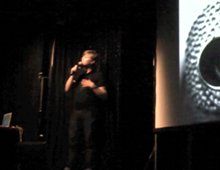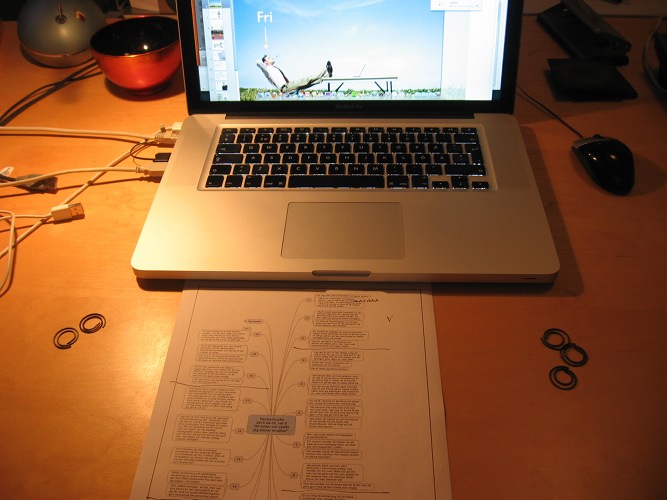Five rigorous paperclips helped me memorize
Datum: 2010-08-22 22:06

Last Tuesday, it was time for me to give my first Pecha Kucha-talk.
It was incredibly fun and an experience that I truly can recommend each and everyone.
If you have an idea that the world should know about, find the next Pecha Kucha event near you and apply to give a talk.
In this blogpost, I would like to share with you how I prepared for this “baptism of fire”. Maybe my method could be helpful to you in some situation.
Twenty slides, twenty branches
Since a Pecha Kucha-presentation has a very strict format (20 slides, 20 seconds each), this enticed me to build my talk in a similarly structured way.
After I had decided upon what message I would like to deliver (why I love structure, i.e. because it gives me an opportunity to feel free and more calm), I sketched my script in a mindmap in Mindmanager.
I created a map with twenty branches — one for each slide — and bit by bit I let my script take shape there. I added some phrases here, some there, and tested to talk it through, in order to secure the flow. Since every slide is shown in exactly 20 seconds (neither more nor less), I had to move words around quite a lot so that every slide had a suitable amount of words.
In the end, when I was content, the result looked like this.

Next, I picked out 20 slides that accompanied and illustrated my message.
OK. Then, the content was all there. Now, I just had to memorize it.
Five rigorous paperclips
I used a method that I learned from a musician colleague of mine, a blessed trumpet player. He used it when he was about to perfect difficult solo melodies and phrases. The method is strict, fair and inexorably effective.
I opened the slideshow on my Mac and put five paperclips to the right of my computer on my desk. I divided the twenty slides into five segments and decided to memorize one segment at a time.
I imagined that I was just about to give my talk publicly, started the slideshow (with automatic slide change every 20 seconds) and began speaking.
To make the exercise as lifelike as possible, I stood up, used a handheld microphone and lead the sound through GarageBand with a slight reverb in the monitor.
Each time I manage to talk through the segment without errors, I moved a paperclip from the right to the left of the computer.

If I faltered more than suitably or if I forgot what to say, I moved all paperclips from the left back to the right again. Not until I had been able to move all five paperclips to the left, i.e. managed to talk through the segment without errors five times in a row, I proceeded to the next segment.
When I had managed to learn all five segments, I started all over again, but this time with the complete talk in the pool. Not until I could give the talk flawlessly five times in a row, I considered myself done.
This method left me wanting more. Of course, it was not very enjoyable to have to move the four paperclips from left to right just because I failed the fifth and last time in a row, but on the other hand, I managed to memorize my talk.
How I managed on the big night? See for yourself:




